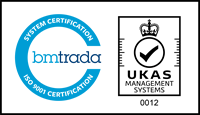Posted on: Wednesday June 02, 2021

Financial wellbeing has accelerated up the corporate agenda thanks to the economic impact of the COVID-19 pandemic. Even as restrictions ease, we’ll be seeing the financial effects for a long time to come. According to The Money Charity, people in the UK owed £1,712.9 billion in March 2021, meaning that a large proportion of the working population is concerned about making ends meet. Since financial worries can stop employees performing at their best, employers have an interest in helping their people make healthy financial choices and habits.
Why you should use your existing employee benefits platform to deliver financial wellbeing:
- Employees are already familiar with the system and used to accessing it on their computer or smartphone, leading to higher engagement levels
- It’s important that financial wellbeing feels part of an integrated benefits offer, not a bolted-on afterthought. By making your benefits platform a one-stop shop, employees know where to turn for support and feel the full value of working there.
- It makes it easier for employees to join up different services for a more effective outcome. For example, an employee struggling with money worries can speak to a counsellor through an EAP, save money on essentials, and review their monthly budget - all in the same place.
Some examples
Education & advice
Employees need appropriate information, education and advice in order to help them achieve good outcomes from their decisions to save, spend and borrow. This can be anything from how to decode your payslip to understanding how to save for retirement.
Employers can help their staff through signposting them to relevant guidance, information and support, as well as providing this themselves, either directly and/or through a trusted partner. Using an employee benefits platform is an easy way for employees to reach all the relevant information – for example, joining an educational webinar on their phone.
There is a wealth of financial advice available via the internet, which is good, but so much information to sift through can feel overwhelming. It helps to have guidance come from one trusted source, ie. an employer - ideally in a format that makes the advice easy to digest and act on.
Support
Usually this is delivered through an Employee Assistance Programme (EAP), a confidential service that enables employers to help staff with personal or workplace issues that might be impacting their performance, wellbeing, mental or physical health.
When it comes to financial wellbeing, an EAP is a useful resource. It provides a one-stop shop for employees to access debt counselling, financial advice, and more.
Many EAP providers have links to charities or government organisations and users can access calculators for credit card debt, pensions, and money health checks. They may also offer advice on housing issues like mortgages and tenancy agreements. What’s more, the phone line can be extremely valuable to employees whose money worries are affecting their mental health but don’t feel able to confide in a friend or family member.
Discounts
Available from a wide range of major retailers, these enable employees to save money on everything from grocery shopping to luxury brands. And with discount codes downloading direct to employees’ phones, it’s a simple way for employers to help make everyday life more affordable.
Wage streaming / flexible pay
This gives employees access to a portion of their wages as soon as they have worked the hours, rather than waiting until the end of the monthly pay cycle. The idea is to alleviate cash flow problems along with the resultant financial stress and potential for going into debt. For example, for many people having to meet an unexpected expense mid-month could mean resorting to a payday lender with sky-high interest rates.
Accessing wages before payday gives employees a higher sense of control over their cash flow and budgets. As an employer, you set a limit on how much of their pay packet staff can stream per month – usually this is around 30%-40%.
This benefit works well for employers with shift workers. Providers also offer fintech-enabled features like wage tracking (visibility of earnings in real time) and gamified savings accounts to encourage financial resilience.
Using your employee benefits platform is the best way to ensure financial wellbeing benefits reach those who need them. Linking up your offering helps employees see how different services can work together to achieve the best outcome. Download our Financial Wellbeing Report for more information.
Cost vs Value – What Really Matters in Health Benefits?
When it comes to creating employee health benefits, there’s always a tug-of-war between keeping costs low and focusing on the actual value those benefits bring.
Posted on: 11 April 2025 by Andrew Walker, New Business Development Director
Top Tips to Improve a Misfiring Recognition Strategy
Whether you’re a professional footballer, engineer or care worker, happiness at work relies on feeling valued, appreciated and respected.
Posted on: 28 March 2025 by Andrew Walker, New Business Development Director
Brace Yourselves: Reward Storm Incoming
In even the most optimistic assessment of the current situation, it is hard to foresee a situation where a substantial portion of workers are not left underwhelmed by their pay offers in 2025.
Posted on: 13 March 2025






